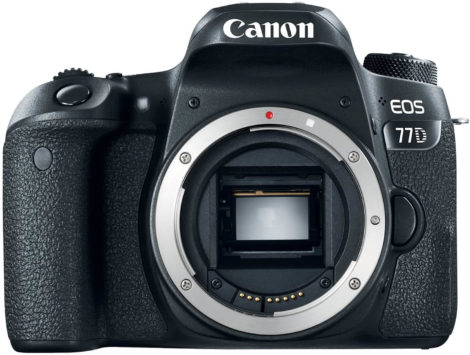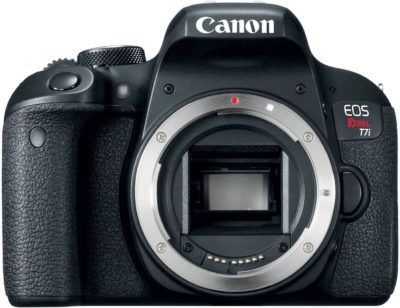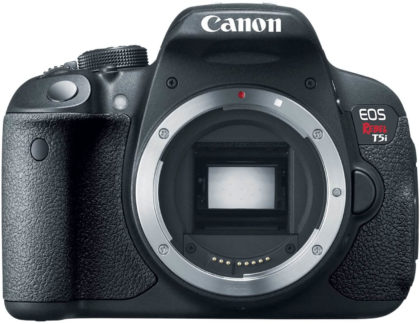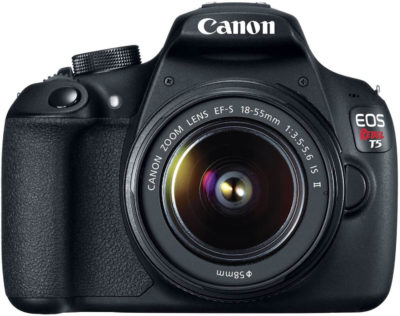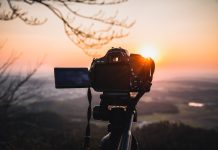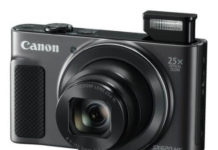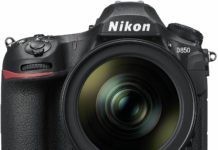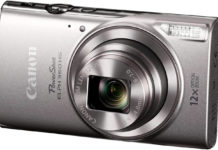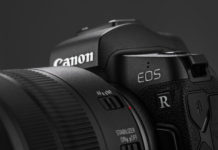Contents
- Canon DSLR Lineup: Complete Guide for 2025
- Understanding Canon’s DSLR Tiers
- Canon’s Current DSLR Lineup (Still Manufactured in 2025)
- 1. Canon EOS-1D X Mark III – The Professional Flagship
- 2. Canon EOS 5D Mark IV – The Professional Workhorse
- 3. Canon EOS 6D Mark II – Entry-Level Full-Frame
- 4. Canon EOS 90D – APS-C Flagship
- 5. Canon EOS Rebel SL3 / EOS 250D – Compact Entry-Level
- 6. Canon EOS Rebel T7 / EOS 2000D – Budget Entry-Level
- Recently Discontinued Models Worth Buying Used
- Canon EOS 7D Mark II – APS-C Pro Body (Discontinued 2020)
- Canon EOS 80D – Enthusiast APS-C (Discontinued 2020)
- Canon EOS 77D – Mid-Range APS-C (Discontinued 2019)
- Canon EOS Rebel T7i / EOS 800D – Upper Entry-Level (Discontinued 2020)
- Canon EOS Rebel T6i / EOS 750D – Entry-Level (Discontinued 2018)
- Older Budget Rebels: T5i, T5, T6s (Discontinued 2015-2018)
- Canon’s Mirrorless Alternative: The EOS R System
- Which Canon DSLR Should You Buy?
- Understanding Canon’s Lens Mount: EF vs EF-S
- How to Use a Canon DSLR: Getting Started
- Canon DSLR Accessories Worth Buying
- The Future of Canon DSLRs
- Final Thoughts: Should You Buy a Canon DSLR in 2025?
Canon DSLR Lineup: Complete Guide for 2025
Canon’s DSLR lineup has evolved dramatically over the past decade, and in 2025, the landscape looks very different than it did even three years ago. As a professional photographer who’s shot with Canon bodies since the film era, I’m going to give you the unvarnished truth about Canon’s current DSLR situation and help you navigate which models are worth your money.
Let’s be direct: Canon has stopped developing new DSLRs. Their focus is entirely on the mirrorless EOS R system. However, this doesn’t mean DSLRs are obsolete—far from it. The current lineup represents the final, refined versions of mature technology, and many models offer exceptional value as prices drop.
This guide breaks down Canon’s DSLR lineup by tier, explains which models are still current versus discontinued-but-available, and helps you understand exactly where each camera fits in Canon’s ecosystem.
Understanding Canon’s DSLR Tiers
Canon organizes DSLRs into clear hierarchies:
Professional Tier: 1D series – Built for photojournalists, sports shooters, and wildlife photographers who need absolute reliability
Advanced Full-Frame: 5D series – Workhorse cameras for professional studios, wedding photographers, and serious enthusiasts
Entry Full-Frame: 6D series – Affordable full-frame access for enthusiasts stepping up from APS-C
Enthusiast APS-C: 7D, 80D, 90D series – Advanced features in smaller, more affordable bodies
Entry-Level APS-C: Rebel series – Beginner-friendly cameras with room to grow
Each tier uses different sensor sizes, build quality levels, and feature sets. Understanding these tiers prevents you from overspending on features you don’t need—or underbuying and hitting limitations quickly.
Canon’s Current DSLR Lineup (Still Manufactured in 2025)
Only a handful of Canon DSLRs remain in active production. Here’s what’s still current:
1. Canon EOS-1D X Mark III – The Professional Flagship
The EOS-1D X Mark III is Canon’s ultimate DSLR—and quite possibly the final evolution of the 1D series. This is the camera you see on NFL sidelines and Olympic press pits. The 20.1MP full-frame sensor intentionally prioritizes speed and low-light performance over resolution.
The 1D X III shoots an astonishing 16 fps with the optical viewfinder (20 fps in live view mode) with full autofocus tracking. The 191-point autofocus system with deep learning subject recognition is phenomenal—it tracks athletes, vehicles, and animals with uncanny accuracy. I’ve shot motorsports with this camera and it keeps tack-sharp focus on cars moving at 180+ mph.
ISO extends from 100-102,400 natively (expandable to 819,200). This camera sees in near darkness. It records 4K 60fps video internally or outputs RAW video via HDMI. Dual CFexpress card slots provide blazing write speeds and redundancy. Build quality is absolutely bulletproof with complete weather sealing. Battery life exceeds 2,850 shots per charge.
The 1D X Mark III weighs 3 lbs (1,440g)—substantial but confidence-inspiring. This camera is built to withstand years of professional abuse. Handling is exceptional with controls positioned exactly where your fingers expect them.
Who should buy it: Professional sports, wildlife, and photojournalism photographers who need absolute reliability and can’t afford to miss the shot. Also ideal for photographers shooting in extreme conditions (rain, dust, heat, cold).
Who shouldn’t: Hobbyists and enthusiasts—the $6,500 price tag and professional focus make this overkill for casual use. If you’re not earning income from photography, look elsewhere.
2. Canon EOS 5D Mark IV – The Professional Workhorse
The 5D Mark IV is Canon’s most versatile professional DSLR, balancing resolution, speed, and features beautifully. The 30.4MP full-frame sensor produces files large enough for commercial printing while maintaining excellent high-ISO performance.
Dual Pixel autofocus provides smooth, cinema-like focus transitions during video recording—a genuine advantage over most DSLRs. The 61-point AF system (41 cross-type) is sophisticated enough for wedding receptions and portrait sessions. Continuous shooting reaches 7 fps, adequate for most professional work outside specialized sports.
The 5D IV records 4K video at 30fps with Motion JPEG encoding (large file sizes) or outputs 4K via HDMI. It includes Canon Log for professional color grading. GPS, WiFi, and NFC are built-in. The touchscreen is responsive for quick menu navigation and focus point selection.
Build quality is professional-grade with magnesium alloy construction and complete weather sealing. I’ve shot outdoor weddings in pouring rain with zero issues. Battery life averages 900 shots per charge—decent but not exceptional.
Who should buy it: Professional photographers needing full-frame quality across multiple genres—weddings, portraits, commercial work, events. Also excellent for serious enthusiasts who’ve mastered their craft and want professional tools.
Who shouldn’t: Beginners will be overwhelmed by the feature set. Landscape photographers wanting maximum resolution should consider the Nikon D850 instead (45MP vs 30MP).
3. Canon EOS 6D Mark II – Entry-Level Full-Frame
The 6D Mark II is Canon’s most affordable current full-frame DSLR, designed for enthusiasts making the leap from APS-C sensors. The 26.2MP sensor balances resolution and file size well. Dual Pixel autofocus works across a wide area for stills and video.
The articulating touchscreen—rare on full-frame DSLRs—makes the 6D II excellent for creative angles and vlogging. The 45-point AF system is adequate (though less sophisticated than the 5D IV’s 61-point system). Continuous shooting reaches 6.5 fps.
The camera records 4K video but with a significant crop factor that limits wide-angle work. Maximum ISO is 40,000 (expandable to 102,400) providing strong low-light capability. WiFi, GPS, NFC, and Bluetooth cover all connectivity needs.
Weather sealing is present but less robust than professional models. Build quality uses more plastic than the 5D IV’s magnesium construction. Battery life is solid at roughly 1,200 shots.
The catch: The 6D Mark II’s dynamic range trails competitors significantly. Landscape photographers recovering shadow detail in high-contrast scenes will notice limitations. This camera excels in good light but struggles with extreme dynamic range compared to Nikon or Sony equivalents.
Who should buy it: Portrait, wedding, and event photographers wanting full-frame image quality and low-light performance at an accessible price. Also good for enthusiasts who’ve outgrown APS-C and prioritize shallow depth of field.
Who shouldn’t: Landscape photographers needing maximum dynamic range. Consider the Nikon D850 or Canon’s mirrorless EOS R5/R6 instead.
4. Canon EOS 90D – APS-C Flagship
The EOS 90D is Canon’s most advanced APS-C DSLR and represents the pinnacle of crop-sensor DSLR development. The 32.5MP sensor provides incredible resolution—more than most full-frame cameras and ideal for wildlife photographers who need to crop heavily.
The 90D shoots 10 fps continuous with reliable AF tracking using a 45-point all cross-type system. Dual Pixel autofocus covers 80% of the frame and works beautifully for video. It records uncropped 4K at 30fps—better than many full-frame DSLRs that crop significantly.
The APS-C sensor’s 1.6x crop factor effectively extends lens reach—a 100-400mm lens becomes 160-640mm equivalent. This makes the 90D exceptional for wildlife, sports, and any telephoto-heavy work. I’ve used this camera for bird photography and the combination of reach and resolution is remarkable.
Build quality includes weather sealing (though not as robust as professional bodies). The articulating touchscreen aids composition. Battery life is excellent at roughly 1,300 shots. The 90D has a single SD card slot—a limitation for professionals needing backup redundancy.
Who should buy it: Wildlife and sports photographers wanting maximum reach and resolution without full-frame prices. Also excellent for enthusiasts who’ve mastered basics and want advanced features.
Who shouldn’t: If you need the shallow depth of field and low-light advantages of full-frame, look at the 6D Mark II instead. Studio and portrait photographers generally prefer full-frame sensors.
5. Canon EOS Rebel SL3 / EOS 250D – Compact Entry-Level
The Rebel SL3 (called EOS 250D internationally) holds the distinction of being one of Canon’s smallest and lightest DSLRs. It features a 24.1MP APS-C sensor with Dual Pixel autofocus producing quality images suitable for most uses.
The fully articulating touchscreen makes the SL3 popular with vloggers and YouTubers. The camera records 4K video at 24fps (with crop) or 1080p at 60fps. Dual Pixel AF tracks faces smoothly during video recording. The optical viewfinder uses a basic 9-point AF system—functional but not sophisticated.
WiFi and Bluetooth enable smartphone connectivity for wireless image transfer and remote shooting. Creative Assist mode helps beginners achieve specific looks without understanding technical exposure settings. Continuous shooting reaches 5 fps.
Build quality is entirely plastic to minimize weight—you feel the difference compared to metal-bodied cameras. There’s no weather sealing. The included EF-S 18-55mm kit lens is optically mediocre—budget for a 50mm f/1.8 prime lens for better results.
Who should buy it: Beginners wanting an easy-to-use DSLR that doesn’t intimidate. Travel photographers prioritizing light weight. Content creators needing 4K video and a flip screen for vlogging.
Who shouldn’t: Photographers planning to shoot in challenging weather (no weather sealing). Action photographers needing sophisticated autofocus. Anyone with large hands may find the grip too small.
6. Canon EOS Rebel T7 / EOS 2000D – Budget Entry-Level
The Rebel T7 (EOS 2000D internationally) is Canon’s most affordable DSLR, designed to hit aggressive price points for budget-conscious beginners. The 24.1MP APS-C sensor produces acceptable images in good light. WiFi enables smartphone connectivity.
The camera shoots 3 fps continuous—slow by modern standards and limiting for action photography. The 9-point AF system is basic and struggles with moving subjects. The fixed 2.7-inch LCD lacks touch functionality and doesn’t articulate. Video tops out at 1080p 30fps.
Build quality is basic plastic throughout. ISO range is 100-6400 (expandable to 12,800)—adequate for most situations but limited compared to more expensive models. Battery life is decent at roughly 500 shots per charge.
The biggest limitation: The T7 often comes in bundles with multiple cheap lenses (18-55mm, 75-300mm, sometimes a 500mm preset). These bundle lenses are optically poor—soft edges, slow autofocus, plastic construction. The camera body is fine, but the included glass compromises image quality significantly.
Who should buy it: Absolute beginners on tight budgets wanting to learn photography fundamentals. Secondary cameras for situations where you’d risk damaging expensive gear. Backup bodies for professionals using Canon systems.
Who shouldn’t: Anyone planning to progress beyond basic photography—you’ll outgrow this camera quickly. If you can afford an extra $100-200, the Rebel SL3 or used Rebel T7i offer significantly better features.
Recently Discontinued Models Worth Buying Used
Canon has discontinued many excellent DSLRs that remain widely available used or as remaining new stock. These often offer better value than current models:
Canon EOS 7D Mark II – APS-C Pro Body (Discontinued 2020)
The 7D Mark II was Canon’s professional APS-C DSLR before the 90D. It features a 20.2MP sensor optimized for speed—10 fps continuous shooting with an advanced 65-point all cross-type AF system. Built like a tank with magnesium alloy construction and complete weather sealing.
The 7D II has dual SD card slots for backup redundancy—a professional feature missing from the 90D. Battery life is phenomenal at 670 shots (more in practice). The maximum ISO is 16,000 (expandable to 51,200).
Why buy used: You can find excellent 7D Mark II bodies for $600-800 used—exceptional value for sports and wildlife photographers prioritizing autofocus and build quality over resolution. The 20MP sensor is plenty for most uses.
Why skip it: The 90D’s 32.5MP sensor provides significantly more resolution. The 7D II lacks 4K video (1080p only). Touchscreen functionality is absent.
Canon EOS 80D – Enthusiast APS-C (Discontinued 2020)
The 80D was Canon’s mid-range APS-C workhorse before the 90D. It features a 24.2MP sensor with 45-point all cross-type AF and 7 fps continuous shooting. Dual Pixel autofocus provides smooth video focusing. The articulating touchscreen is intuitive and responsive.
Build quality is solid with weather sealing. Battery life is excellent at roughly 960 shots. The 80D records 1080p 60fps video but lacks 4K. WiFi and NFC enable wireless connectivity.
Why buy used: You can find 80D bodies for $450-600 used—fantastic value for enthusiasts wanting a capable all-rounder. The 24MP resolution handles most needs, and Dual Pixel AF is excellent for video work.
Why skip it: The 90D offers 32.5MP resolution, 4K video, and 10 fps shooting for not much more money. If you shoot video regularly, the lack of 4K will frustrate you.
Canon EOS 77D – Mid-Range APS-C (Discontinued 2019)
The 77D bridged the gap between entry Rebels and the enthusiast 80D. It features a 24.2MP sensor with Dual Pixel AF, articulating touchscreen, and 6 fps continuous shooting. The top LCD panel (missing from Rebels) displays shooting settings at a glance.
The 77D has a 45-point AF system (same as the 80D) and records 1080p 60fps video. Build quality is a step up from Rebels with better ergonomics and control layout. WiFi, Bluetooth, and NFC are built-in.
Why buy used: Available for $350-450 used, the 77D offers 80D-like features in a slightly less robust body. Excellent value for enthusiasts wanting good performance without professional price tags.
Why skip it: The 90D or used 80D offer better value if you can spend slightly more. The 77D occupied an awkward middle position that’s less relevant now.
Canon EOS Rebel T7i / EOS 800D – Upper Entry-Level (Discontinued 2020)
The Rebel T7i (EOS 800D) was Canon’s premium entry-level DSLR before the SL3. It features a 24.2MP sensor with Dual Pixel AF and a responsive touchscreen interface. The camera shoots 6 fps continuous with a 45-point all cross-type AF system.
The articulating touchscreen makes creative angles easy. Dual Pixel autofocus provides smooth video focusing. WiFi, Bluetooth, and NFC cover wireless needs. Battery life is strong at roughly 600 shots. The T7i records 1080p 60fps but lacks 4K video.
Why buy used: Available for $400-500 used (often with kit lens), the T7i offers excellent value for beginners wanting room to grow. The touchscreen interface is intuitive, and the 45-point AF system handles moving subjects well.
Why skip it: The current SL3 adds 4K video and costs similar new. If video matters, get the SL3. If video doesn’t matter, the used T7i is excellent value.
Canon EOS Rebel T6i / EOS 750D – Entry-Level (Discontinued 2018)
Table could not be displayed.The T6i (EOS 750D) was the T7i’s predecessor with similar specifications but older technology. It features a 24.2MP sensor, 19-point AF system, and 5 fps continuous shooting. The articulating touchscreen and WiFi/NFC connectivity were impressive when released.
Why buy used: Available for $250-350 used, the T6i offers decent value for absolute beginners on tight budgets. Image quality remains solid for learning photography fundamentals.
Why skip it: The 19-point AF system is less capable than newer 45-point systems. For slightly more money, the T7i or SL3 offer significantly better features. Only worth considering if budget is extremely tight.
Older Budget Rebels: T5i, T5, T6s (Discontinued 2015-2018)
The Rebel T5i, T5, and T6s represent older entry-level DSLRs from the mid-2010s. They feature 18-24MP sensors, basic AF systems, and older processors. Image quality is acceptable but technology feels dated compared to current smartphones.
Why buy used: Available for $150-250 used, these cameras offer DSLR experience at minimal cost. Good for learning manual exposure and understanding photography fundamentals without risking expensive gear.
Why skip it: Limited AF capability, slow processors, and dated features mean you’ll likely outgrow these quickly. Modern smartphones often produce better images in challenging light. For slightly more money, used T7i or current T7 models offer significantly better experiences.
Canon’s Mirrorless Alternative: The EOS R System
Before committing to a DSLR, consider Canon’s mirrorless EOS R system. Canon’s development focus is entirely on mirrorless, meaning future lenses, features, and innovations will prioritize the R mount.
EOS R System Advantages:
- Eye-tracking autofocus that’s leagues ahead of DSLR AF systems
- In-body image stabilization (IBIS) on R5, R6, and R6 Mark II
- Electronic viewfinders with exposure preview and focus peaking
- Silent electronic shutters for events and wildlife
- Compact lenses optimized for mirrorless (RF mount)
- Better video AF and features across the lineup
DSLR Advantages:
- Optical viewfinders with zero lag and no battery drain
- Vastly longer battery life (1,000+ shots vs 300-500 shots)
- Lower prices as manufacturers clear inventory
- Decades of affordable used EF lenses available
- Proven, mature technology with no firmware bugs
- Larger bodies with better ergonomics for big hands
The Canon EOS R3 represents Canon’s professional mirrorless flagship, offering speed and features that exceed even the 1D X Mark III. However, it costs $5,999 body only—mirrorless technology comes at a premium.
My honest take: If you’re buying your first serious camera in 2025 and plan to invest in this system long-term, consider mirrorless. Canon’s future is there. However, if you’re on a budget, value battery life and optical viewfinders, or already own EF lenses, DSLRs offer exceptional value right now.
Which Canon DSLR Should You Buy?
Here’s my straight advice based on specific use cases:
Professional Sports/Wildlife Photographer: EOS-1D X Mark III (if budget allows) or used 7D Mark II (if budget-conscious). The speed, AF, and build quality justify the investment if you’re earning income.
Professional Wedding/Portrait/Commercial: EOS 5D Mark IV for full-frame quality and reliable operation. The 30MP resolution handles all professional needs, and Dual Pixel AF aids video work.
Enthusiast Upgrading to Full-Frame: EOS 6D Mark II if you shoot portraits/events in good light. Skip it for landscapes—get a used Nikon D850 instead for better dynamic range.
Wildlife/Sports Enthusiast (Budget Conscious): EOS 90D new or 7D Mark II used. Both offer professional-level AF and speed at accessible prices. The APS-C crop factor is an advantage for telephoto work.
Advanced Enthusiast (All-Around Use): EOS 90D new or 80D used. Both offer excellent feature sets, weather sealing, and performance for most photography. The 90D adds 4K video and higher resolution.
Beginner with Growth Potential: Rebel SL3 or used T7i. Both offer touchscreens, Dual Pixel AF, and enough features to keep you engaged for years. The SL3 adds 4K video and lighter weight.
Absolute Beginner on Tight Budget: Rebel T7 new or used T6i. Both get you into DSLR photography affordably. Expect to outgrow them within 1-2 years as your skills progress.
Content Creator (Photo + Video): EOS 90D (4K uncropped) or SL3 (4K with crop, flip screen). Both offer Dual Pixel AF for smooth video focusing. Honestly consider mirrorless EOS R10 or R50 instead—better video AF.
Understanding Canon’s Lens Mount: EF vs EF-S
Canon uses two DSLR lens mounts that cause significant confusion:
EF Mount (Full-Frame): These lenses work on all Canon DSLRs—both full-frame and APS-C bodies. They cover the full 35mm sensor. Examples: EF 50mm f/1.8, EF 70-200mm f/2.8, EF 24-70mm f/2.8.
EF-S Mount (APS-C Only): These lenses only work on APS-C bodies (Rebels, 90D, 80D, 7D, etc.). They’re smaller and cheaper but cannot be used on full-frame cameras (5D, 6D, 1D). Examples: EF-S 10-18mm, EF-S 18-55mm, EF-S 55-250mm.
The practical implication: If you buy an APS-C camera (Rebel, 90D) with EF-S lenses and later upgrade to full-frame (6D Mark II, 5D Mark IV), you’ll need to replace all your EF-S lenses. This gets expensive fast.
My lens buying strategy: Even on APS-C cameras, I buy EF lenses when possible. Yes, they’re bigger and more expensive, but they work on any Canon DSLR. This protects your investment when upgrading bodies. Buy EF-S lenses only when EF equivalents don’t exist (ultra-wide angles) or when budget is extremely tight.
How to Use a Canon DSLR: Getting Started
New to DSLR photography? Here’s what to focus on:
Master the Exposure Triangle: Aperture, shutter speed, and ISO work together to control how much light reaches your sensor. Understanding their relationship is fundamental to photography. Aperture controls depth of field, shutter speed controls motion blur, ISO controls sensor sensitivity (and noise).
Start in Aperture Priority (Av) Mode: You set the aperture, the camera chooses shutter speed. This teaches you aperture’s creative effects (shallow vs deep depth of field) while the camera handles technical exposure.
Learn Your Autofocus Modes: One-Shot AF (for stationary subjects like portraits and landscapes) vs AI Servo AF (for moving subjects like sports and wildlife). Using the wrong mode causes frustration and missed shots.
Understand ISO: Lower ISO (100-400) produces cleanest images but requires good light. Higher ISO (1600-12,800) enables shooting in dim conditions but adds noise (grain). Modern Canon DSLRs handle ISO 3200-6400 remarkably well.
Shoot RAW Format: RAW files contain significantly more data than JPEGs, allowing you to recover blown highlights, lift crushed shadows, and adjust white balance in post-processing. The flexibility is transformative. Yes, file sizes are larger—buy bigger SD cards.
Invest in a Good Lens Before Upgrading Bodies: A $125 EF 50mm f/1.8 lens on a $400 Rebel T7 will produce dramatically better images than an $2,000 5D Mark IV with the kit 18-55mm lens. Glass matters more than bodies for image quality.
Practice, Practice, Practice: Shoot 10,000 images. Analyze what works and what doesn’t. Photography is a craft skill—reading doesn’t replace doing. The more you shoot, the faster concepts click.
Canon DSLR Accessories Worth Buying
Essential Accessories:
- Extra Batteries: Always carry at least one spare. Batteries fail at the worst possible moments.
- Quality SD Cards: Buy name-brand cards (SanDisk, Lexar) with fast write speeds (UHS-I or UHS-II). Cheap cards corrupt data and cause camera freezing.
- Prime Lens: The EF 50mm f/1.8 STM ($125) transforms image quality compared to kit lenses. Sharpness and low-light capability are night and day different.
- Camera Bag: Protect your investment with padded storage. Backpack-style bags distribute weight better than shoulder bags for all-day carrying.
- Lens Cleaning Kit: Dust and fingerprints degrade image quality. Keep a blower, microfiber cloth, and lens pen handy.
Nice-to-Have Accessories:
- Tripod: Essential for landscapes, long exposures, and macro work. Buy once, cry once—cheap tripods are frustrating.
- External Flash: Built-in pop-up flashes produce harsh, unflattering light. An external speedlight (430EX III-RT or 600EX II-RT) bounces off ceilings for natural-looking results.
- Remote Shutter Release: Prevents camera shake for long exposures and allows you to be in group photos.
- Circular Polarizer Filter: Reduces reflections, deepens blue skies, and enhances colors. Especially valuable for landscape photography.
The Future of Canon DSLRs
Let’s be realistic about what’s coming—or rather, what isn’t. Canon has made clear that DSLR development has ended. No new models are in the pipeline. The current lineup represents the final generation of Canon’s DSLR technology.
However, “end of development” doesn’t mean “immediately obsolete.” Canon will continue manufacturing current models as long as demand exists. Parts and service will remain available for years—Canon still services film cameras from the 1970s. The extensive used market ensures bodies and lenses will be available and affordable for the foreseeable future.
What this means practically: If you buy a Canon DSLR today, you’re buying mature, proven technology that will continue working excellently for 10-15+ years. However, future innovations—better autofocus algorithms, advanced video features, new lens designs—will arrive exclusively on mirrorless cameras.
For working professionals, this creates a genuine decision point: stick with reliable DSLRs until they physically fail, or transition to mirrorless to access future technology. For enthusiasts and hobbyists, DSLRs represent exceptional value as prices decline.
My prediction: In 2030, Canon DSLRs will still be widely used and producing professional-quality images. They won’t be cutting-edge, but photography fundamentals—light, composition, timing—will remain unchanged. A well-maintained 5D Mark IV or 90D will still create stunning photographs a decade from now.
Final Thoughts: Should You Buy a Canon DSLR in 2025?
Yes—but with eyes wide open about what you’re buying.
Canon DSLRs represent mature, refined technology at declining prices. If you value optical viewfinders, exceptional battery life, extensive lens selection, and proven reliability, they’re excellent cameras. The current lineup offers options from budget beginner models through professional flagships that compete with anything in the industry.
However, you’re buying into a platform in sunset. Future development is mirrorless. If you’re building a system from scratch and plan to invest thousands in lenses over the next decade, strongly consider mirrorless alternatives. If you’re on a budget, want reliability over cutting-edge features, or already own EF lenses, DSLRs offer tremendous value.
The best camera is the one you’ll actually use. A $400 Rebel T7 that you carry everywhere and shoot constantly will produce better work than a $6,500 1D X Mark III that stays home because it’s too heavy or you’re afraid to damage it.
Choose the Canon DSLR that fits your budget, matches your skill level, and inspires you to shoot. Then go make photographs. That’s what matters.
Last update on 2025-10-07 / Affiliate links / Images from Amazon Product Advertising API


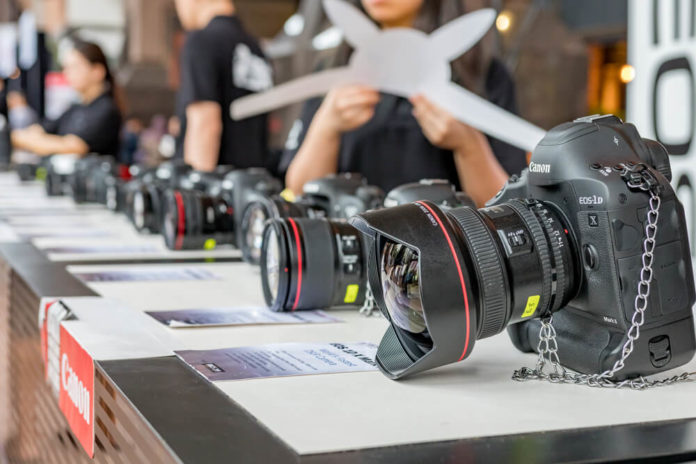
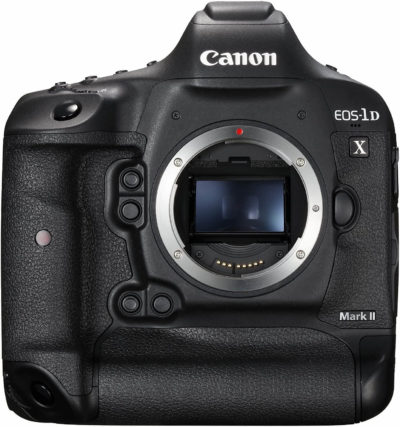
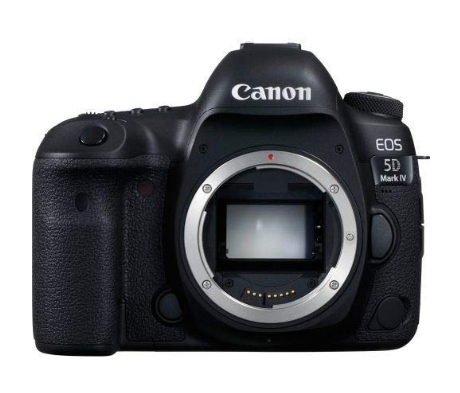
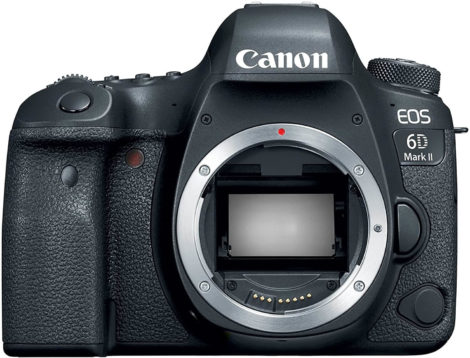
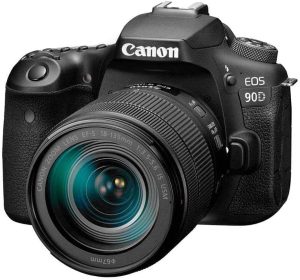


![This is an image of Canon Digital SLR Camera Body [EOS 80D] with 24.2 Megapixel (APS-C) CMOS Sensor and Dual Pixel CMOS AF - Black](https://static.lensandshutter.com/wp-content/uploads/2020/04/02-2-e1585730446606.jpg)
